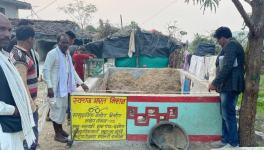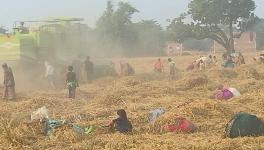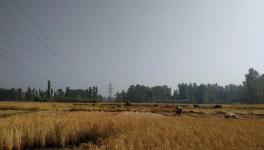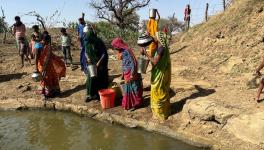Over 10 Crore Rural Households do not Have Tap Water Supply

Representational image. | Wikimedia Commons
Over ten crore rural households in India do not have access to tap water in India, according to data presented in the Lok Sabha by Prahlad Singh Patel, the Minister of State for Jal Shakti, on Thursday, February 10. According to the data presented by the Ministry of Jal Shakti, out of 19.28 crore rural households, only 8.95 crore, that is, 46.41% of the households are reported to have tap water supply in their homes.
While, according to the data, in some states, 100% of the rural households have access to tap water, in as many as 15 states, less than 50% of the rural households have a tap water supply.

Uttar Pradesh is the worst-performing state according to the data presented by the Ministry, with only 13.32% of the rural households having tap water supply, followed by Chhattisgarh (17.26%), Jharkhand (18.4%), West Bengal (18.8%), and Rajasthan (22.67). In Uttar Pradesh alone, 2.29 crore rural households do not have access to potable tap water.
According to the goals set by the Union and state governments, every rural household in the states with the poorest performances is supposed to have a tap water supply by 2024. However, a look at the data from the previous years may make this goal seem a little far-fetched. While the number of rural households with a tap water supply has seen a significant increase between August 2019 and February 2022, it is still not enough.
While the percentage of rural households with tap water supply went from 17.07% in 2019 to 46.41% in 2022, the situation needs to improve a lot if India has to meet its goal of ensuring that every single rural household has tap water supply by 2024, especially for the states which have the lease proportion of houses with tap water supply.

Looking at the current situation, one would imagine that the Union government is spending enough money to ensure that potable drinking water becomes more accessible to rural households. However, that is not the case either. According to the MoS, out of Rs 45,011 crore allocated for Jal Jeevan Mission in 2021-22, only Rs. 28,681.89 crore (64%) has been released to the eligible States/ UTs so far, even though the current financial year is nearing its end. The Jal Jeevan Mission (JJM) aims to provide potable water at the service level of 55 litres per capita per day to every rural household through a tap water connection by 2024. The estimated outlay of the mission is Rs 3.60 lakh Crore, out of which the Central share is Rs 2.08 lakh crore.

The MoS also said, "As reported by States/UTs, as on 07.02.2022, out of 17.01 lakh rural habitations of the country, 13.22 lakh (77.68%) habitations having 77.90% population have the provision of potable drinking water with supply level of more than 40 litre per capita per day (lpcd) and 3.44 lakh (20.24%) habitations having 20.39% population with supply level of less than 40 lpcd with sources at a reasonable distance and 0.35 lakh (2.08%) rural habitations having 1.71% population are reported to have water quality issues in drinking water sources."
For FY 2022-2023, Rs 60,000 crore as Gross Budgetary Support (GBS) has been proposed for the Jal Jeevan Mission. While this is a significant increase, the Union government has to ensure that the money is released and utilised, given that it has so far released only 64% of the funds allocated for the current fiscal year.
Get the latest reports & analysis with people's perspective on Protests, movements & deep analytical videos, discussions of the current affairs in your Telegram app. Subscribe to NewsClick's Telegram channel & get Real-Time updates on stories, as they get published on our website.
























